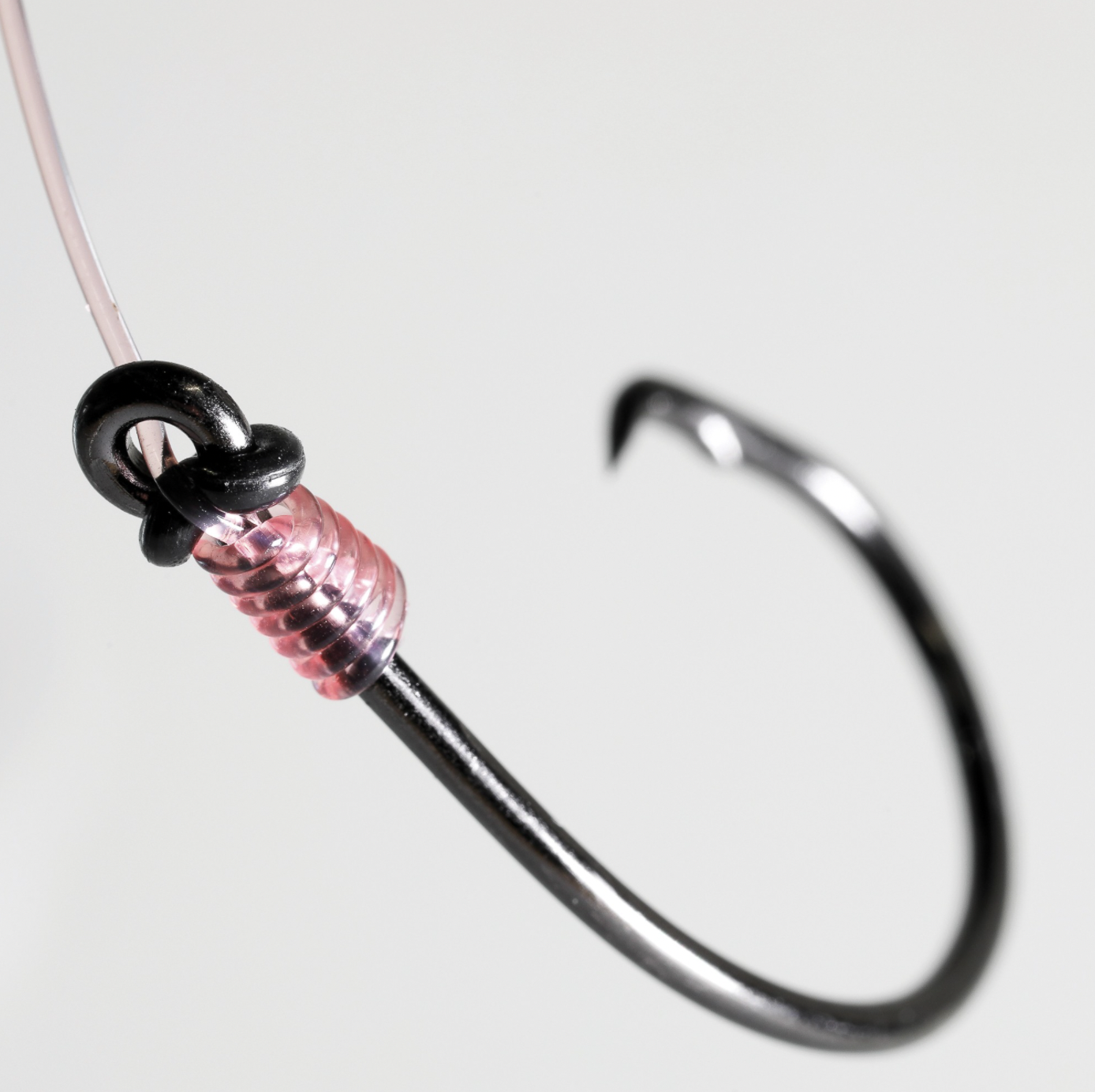Article Courtesy: inthebiteg.com | Originally Published: 1/28/2022 | Click here for original article
How to Tie a Better Snell Knot
The earliest known inhabitants of the Pacific crafted eyeless hooks from bone and shell with impressive elegance and ingenuity. A variation of the primitive methods employed in lashing hooks to line, the snell knot is widely favored across global fisheries. Creative anglers keen on advancing their collection of skills continue to perfect the craft with the latest iterations preventing tackle failure at traditional breaking points.
As a consequence of the snell knot’s inherent arrangement, and our particular preference in selecting hooks with straight eyes, leader material passing through the hook eye forms an acute angle around a potentially sharp edge that can compromise the line’s durability. On the well-traveled Jaruco, a 90-foot Jarrett Bay, first mate Kieran Pullman has a unique use for a common implement we have all become so familiar with.
Positioning an O-ring tight to the hook eye before snelling cushions the leader and allows for the application of higher drag pressure at the end game.

As perfectly tied knots become more sophisticated, the results speak for themselves.
“I recently returned from a trip to Cabo San Lucas on the Jaruco and we released over 50 striped marlin. Not one fish broke the leader during the fight. In many instances, we would push the lever drag of the Shimano Talica 25 to park applying a high amount of pressure on the fish to keep a tight leash on multiples. Not once did the leaders break without the wireman assisting. It was pretty impressive to see that many fish released, and the tackle worked flawlessly every time,” says Dale Wills, InTheBite publisher.
Similarly, Capt. Scott Walker reinforces his snell knots with a secondary wrap of line directed through the hook eye. “We were filming an episode of Into the Blue in Venice, Louisiana and our snells kept failing right at the eye of the hook. To get bit we had to scale down in leader size. But we were putting the heat on some big yellowfin tuna. With an improved approach, we didn’t lose another fish to tackle failure that day. Now, I use this modified double snell for everything. Whether casting live ballyhoo to sailfish in the Florida Keys or trolling for white marlin in the Mid-Atlantic, that is my go-to.”






